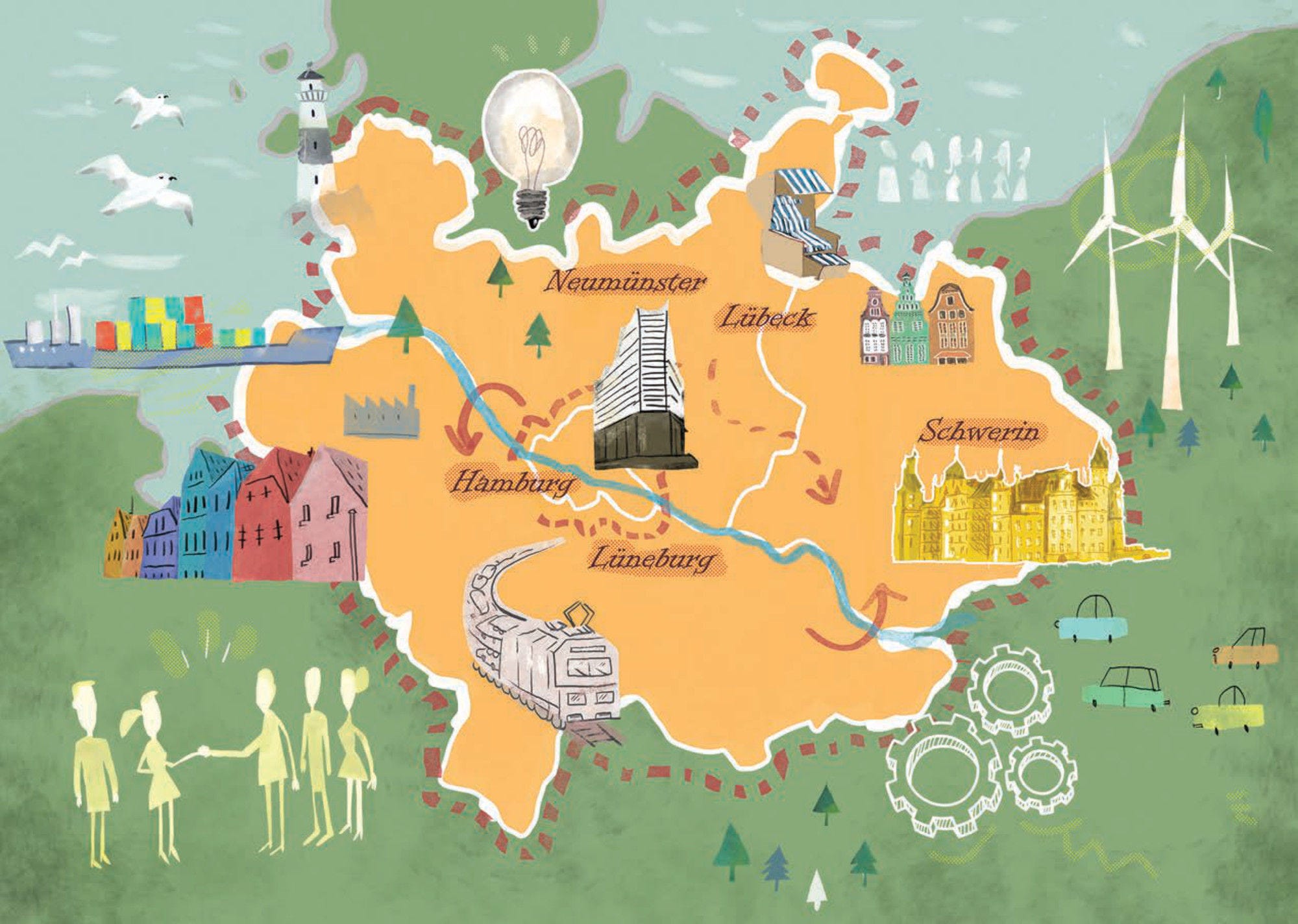With about 8% of the national territory, the Hamburg Metropolitan Region (HMR) is the second largest in Germany, just behind the metropolitan region of Berlin-Brandenburg. Home to almost 5.4 million inhabitants, it encompasses the Free and Hanseatic City of Hamburg (which is also a federal state) and parts of 3 states surrounding it: Schleswig-Holstein (51% of its territory lies within the HMR), Mecklenburg-Western Pomerania (30%), and Lower Saxony (26%). The metropolitan region brings together 20 districts and more than 1 100 municipalities.
Among the 11 metropolitan regions in Germany, the HMR registers the second lowest population density, with only 186 inhabitants per square kilometre and 12.5% of its territory used for settlement or transport. This reflects the heterogeneous combination of a densely populated urban core and a relatively wide periphery. The core area, composed of the city of Hamburg and its immediate surroundings, is economically stronger but also struggling to maintain affordable housing, attract skilled workers and preserve its high quality of life. Some rural areas have capitalised on economic sectors such as tourism and renewable energy, but many are also losing population and have poorer access to public services and employment opportunities.
With 4 federal states, the HMR spans the highest number of states among the 11 metropolitan regions in Germany and includes 2 of the 4 state capitals. Regional co‑operation in the area dates back as far as the 1920s and was progressively institutionalised through an inter-state agreement in 1991, the recognition at the federal level by the Standing Conference of Ministers Responsible for Spatial Planning (Ministerkonferenz für Raumordnung) in 1995, and further regional expansion up until 2017. The HMR Office does not constitute a tier of government and has no dedicated competencies. It serves as a co-ordination body and promotes dialogue to help build consensus among its 36 stakeholders, who are frequently driven apart due to differences in their legal frameworks, policy objectives and political interests.
